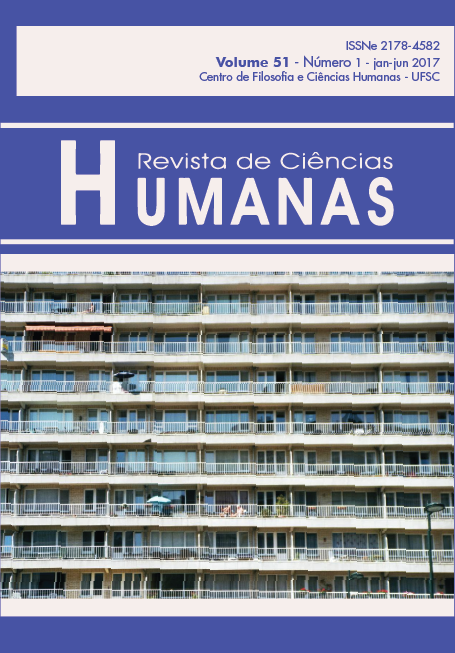Morangos silvestres: imagens-tempo de um aprendizado
DOI:
https://doi.org/10.5007/2178-4582.2017v51n1p21Resumo
Através do filme Morangos Silvestres (1957) de Ingmar Bergman, este texto se dedica a analisar suas imagens-tempo. Estas aproximam o cinema da realidade do pensamento, tendo a função de levar o olho à função de vidência, pois os elementos da imagem entram em relações que fazem com que a imagem inteira deva ser “lida” não menos que vista, legível tanto quanto visível. O mundo aparece para ser visto e lido, como literalidade. Cinema mais perto de uma leitura do que de uma percepção, cinema que nos leva ao caminho dos signos, que nos torna decifradores, nos fazendo recuar do reconhecimento automático e habitual. Uma montagem que propõe transtornos às percepções e ações do espectador, porque faz irromper um elemento novo que impede a percepção de se prolongar em ação.Referências
BERGSON, Henri. Matéria e memória. São Paulo: Martins Fontes, 1990.
DELEUZE, Gilles. Proust e os signos. Rio de Janeiro: Forense Universitária, 1987.
DELEUZE, Gilles. Diferença e repetição. Rio de Janeiro: Graal, 1988.
DELEUZE, Gilles. A Imagem-tempo. São Paulo: Brasiliense, 2007.
PROUST, Marcel. Em busca do tempo perdido. Rio de Janeiro: Ediouro, 2004.
Downloads
Publicado
Edição
Seção
Licença
A aprovação dos textos implica a cessão imediata e sem ônus dos direitos de publicação na Revista de Ciências Humanas - UFSC, que terá a exclusividade de publicá-los em primeira mão. O autor continuará, não obstante, a deter os direitos autorais para publicações posteriores. No caso de republicação dos artigos em outros veículos, recomenda-se a menção à primeira publicação em Revista de Ciências Humanas.
Política de Acesso Livre – A RCH é publicada sob o modelo de acesso aberto sendo, portanto, livre para qualquer pessoa ler, baixar, copiar e divulgar.
Esta revista proporciona acesso público a todo seu conteúdo, seguindo o princípio de que tornar gratuito o acesso a pesquisas gera um maior intercâmbio global de conhecimento. Tal acesso está associado a um crescimento da leitura e citação do trabalho de um autor. Para maiores informações sobre esta abordagem, visite Public Knowledge Project, projeto que desenvolveu este sistema para melhorar a qualidade acadêmica e pública da pesquisa, distribuindo o OJS assim como outros software de apoio ao sistema de publicação de acesso público a fontes acadêmicas.
 Todo o conteúdo deste periódico, exceto onde está identificado, está licenciado sob uma Licença Creative Commons
Todo o conteúdo deste periódico, exceto onde está identificado, está licenciado sob uma Licença Creative Commons
.



